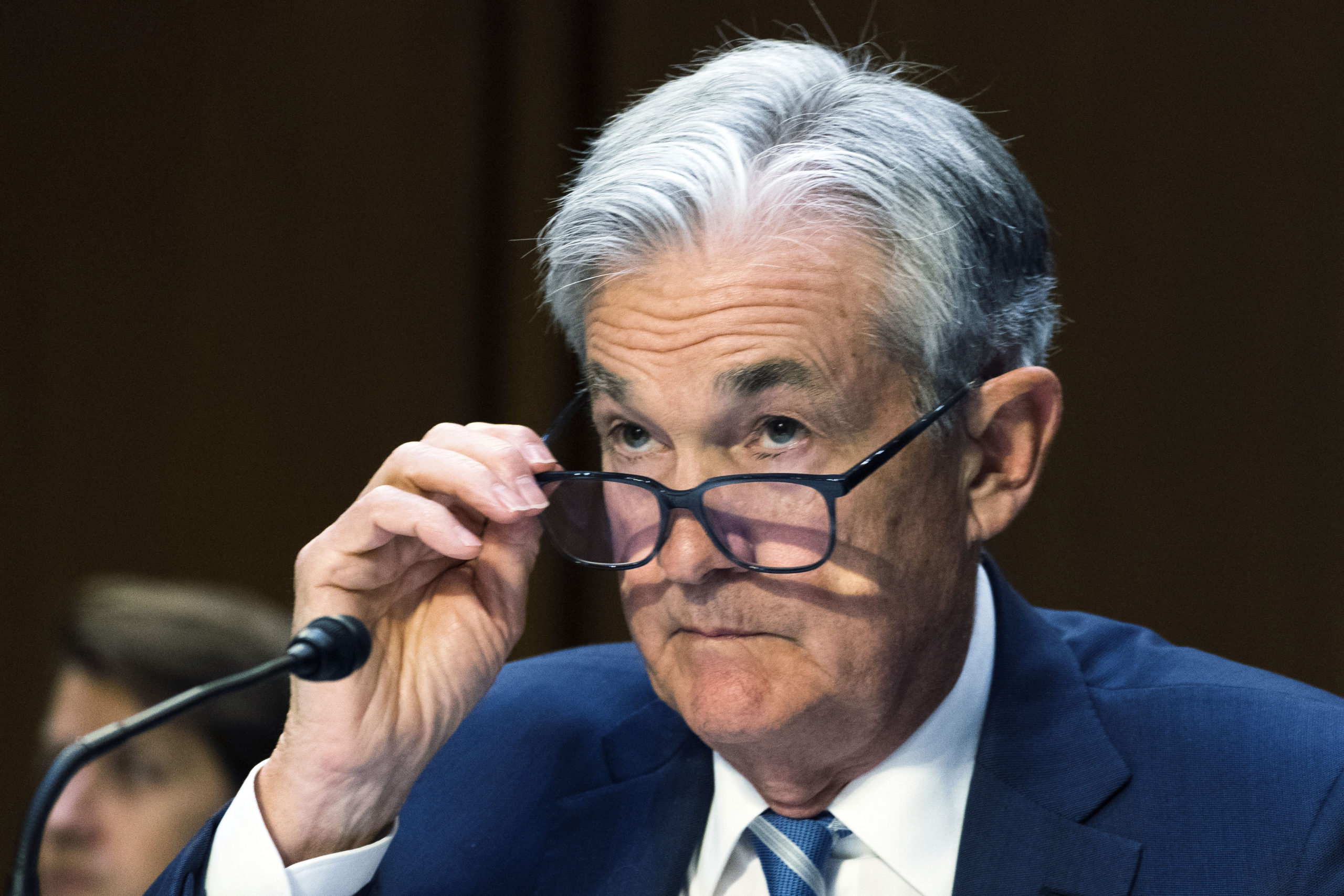WASHINGTON (AP) — The Federal Reserve on Wednesday raised its benchmark interest rate by a hefty three-quarters of a point for a second straight time in its most aggressive drive in more than three decades to tame high inflation.
The Fed’s move will raise its key rate, which affects many consumer and business loans, to a range of 2.25% to 2.5%, its highest level since 2018.
Speaking at a news conference after the Fed’s latest policy meeting, Chair Jerome Powell offered mixed signals about the central bank’s likely next moves. He stressed that the Fed remains committed to defeating chronically high inflation, while holding out the possibility that it may soon downshift to smaller rate hikes.
And even as worries grow that the Fed’s efforts could eventually cause a recession, Powell passed up several opportunities to say the central bank would slow its hikes if a recession occurred while inflation was still high.
Roberto Perli, an economist at Piper Sandler, an investment bank, said the Fed chair emphasized that “even if it caused a recession, bringing down inflation is important.”
But Powell’s suggestion that rate hikes could slow now that its key rate is roughly at a level that is believed to neither support nor restrict growth helped ignite a powerful rally on Wall Street, with the S&P 500 stock market index surging 2.6%. The prospect of lower interest rates generally fuel stock market gains.
At the same time, Powell was careful during his news conference not to rule out another three-quarter-point hike when the Fed’s policymakers next meet in September. He said that rate decision will depend upon what emerges from the many economic reports that will be released between now and then.
“I do not think the U.S. is currently in a recession,” Powell said at his news conference in which he suggested that the Fed’s rate hikes have already had some success in slowing the economy and possibly easing inflationary pressures.
The central bank’s decision follows a jump in inflation to 9.1%, the fastest annual rate in 41 years, and reflects its strenuous efforts to slow price gains across the economy. By raising borrowing rates, the Fed makes it costlier to take out a mortgage or an auto or business loan. Consumers and businesses then presumably borrow and spend less, cooling the economy and slowing inflation.
The surge in inflation and fear of a recession have eroded consumer confidence and stirred public anxiety about the economy, which is sending frustratingly mixed signals. And with the November midterm elections nearing, Americans’ discontent has diminished President Joe Biden’s public approval ratings and increased the likelihood that the Democrats will lose control of the House and Senate.
The Fed’s moves to sharply tighten credit have torpedoed the housing market, which is especially sensitive to interest rate changes. The average rate on a 30-year fixed mortgage has roughly doubled in the past year, to 5.5%, and home sales have tumbled.
Consumers are showing signs of cutting spending in the face of high prices. And business surveys suggest that sales are slowing. The central bank is betting that it can slow growth just enough to tame inflation yet not so much as to trigger a recession — a risk that many analysts fear may end badly.
At his news conference, Powell suggested that with the economy slowing, demand for workers easing modestly and wage growth possibly peaking, the economy is evolving in a way that should help reduce inflation.
“Are we seeing the slowdown in economic activity that we think we need?” he asked. “There’s some evidence that we are.”
The Fed chair also pointed to measures that suggest that investors expect inflation to fall back to the central bank’s 2% target over time as a sign of confidence in its policies.
Powell also stood by a forecast Fed officials made last month that their benchmark rate will reach a range of 3.25% to 3.5 % by year’s end and roughly a half-percentage point more in 2023. That forecast, if it holds, would mean a slowdown in the Fed’s hikes. The central bank would reach its year-end target if it were to raise its key rate by a half-point when it meets in September and by a quarter-point at each of its meetings in November and December.
With the Fed having now imposed two straight substantial rate hikes, “I do think they’re going to tiptoe from here,’’ said Thomas Garretson, senior portfolio strategist at RBC Wealth Management.
On Thursday, when the government estimates the gross domestic product for the April-June period, some economists think it may show that the economy shrank for a second straight quarter. That would meet one longstanding assumption for when a recession has begun.
But economists say that wouldn’t necessarily mean a recession had started. During those same six months when the overall economy might have contracted, employers added 2.7 million jobs — more than in most entire years before the pandemic. Wages are also rising at a healthy pace, with many employers still struggling to attract and retain enough workers.
Still, slowing growth puts the Fed’s policymakers in a high-risk quandary: How high should they raise borrowing rates if the economy is decelerating? Weaker growth, if it causes layoffs and raises unemployment, often reduces inflation on its own.
That dilemma could become an even more consequential one for the Fed next year, when the economy may be in worse shape and inflation will likely still exceed the central bank’s 2% target.
“How much recession risk are you willing to bear to get (inflation) back to 2%, quickly, versus over the course of several years?” asked Nathan Sheets, a former Fed economist who is global chief economist at Citi. “Those are the kinds of issues they’re going to have to wrestle with.”
Economists at Bank of America foresee a “mild” recession later this year. Goldman Sachs analysts estimate a 50-50 likelihood of a recession within two years.
___
AP Economics Writer Paul Wiseman contributed to this report.

